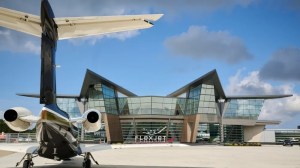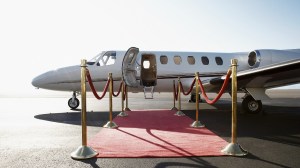The private-jet world seems to be leveling off from its record highs during the Covid years. The fractional and jet-card segments are still above pre-Covid sales levels, while others such as used aircraft sales and on-demand charter have declined from giddy highs in 2021 and 2022.
Sentiment for the near-term of business aviation was positive at last week’s Corporate Jet Investor (CJI) conference in Miami, in an industry known for its cyclical highs and lows. Aircraft company CEOs, jet-card executives, aviation attorneys, aircraft brokers, and private equity reps examined different sectors of the industry during three days of interviews and panel discussions. They agreed, with some exceptions, that the market remains strong, following those unprecedented pandemic highs.
“We’re happy as clams,” said Don Dwyer, a principal with Guardian Jet, a brokerage firm specializing in consulting and used aircraft sales. “We’re seeing an underlying optimism in people buying and selling aircraft. The market remains strong. This is our biggest year ever.”
High-net worth clients have largely remained in business aviation since Covid, while the sector has also seen a return of corporate travelers.
Getty Images
The re-election of Donald Trump seems to have had an immediate beneficial impact. “Our market indicators have gone up 35 points since the election,” says Rollie Vincent, director of JetNet IQ, which tracks business aviation in industry surveys. “There are a lot of signs right now that things aren’t going to slow down, at least not for the short term—barring a black-swan event.”
Business aviation is broken down across different categories, between new and used aircraft sales, fractional ownership (where a company or individual buys an ownership stake in a jet for three to five years), on-demand charter, and jet cards.
“It’s nuts. We saw our spring being extended beyond its usual season and then summer was really busy,” says Alan Walsh, senior vice president of client management and operations for Sentient, a jet-card maker. He explains that the company expects to sell $100 million worth of flights by the end of the year, and expects a strong year next year, “barring any unforeseen larger issues.”

Fractional ownership firms like Flexjet are seeing growth and making investments in new aircraft and infrastructure. Flexjet’s new $50 million headquarters.
Flexjet
Sentient’s sister company, Flexjet, has seen its fractional business grow during the Covid years and beyond. The company reported an 11 percent year-to-date sales growth compared to last year, with a waiting list.
For the entire fractional segment, including fractional’s largest firm, NetJets, Flexjet, and nearly a dozen smaller companies, the number of flights was up 59 percent in the second quarter of 2024, compared to the same quarter of pre-covid 2019. A mix of whole aircraft owners, now selling their jets and moving into fractional, charter users, and corporate flight departments are driving the increase.
“Surprisingly, our fractional customer profile has gotten about 10 years younger,” said Kenn Ricci, the principal of Directional Aviation Capital, during the keynote address. “That’s a good thing because they’ll be with us longer. We’re also selling shares in four times as many mid- and super-mid aircraft than we do light jets. So, the jets are getting bigger. The other big change is our international growth.”

Bizav’s weak links are shortages of repair facilities, technicians and spare parts. Some aircraft can be grounded for weeks.
Getty Images
The used-aircraft market, which softened after frenzied sales activity in 2021 and 2022, seems to be stabilizing in the second half of this year, according to Vincent. “Values are holding up higher and longer than we expected, and we expect values to increase in the fourth quarter of this year,” he said. Because of U.S. tax, the fourth quarter sees a surge of business jet sales.
New business jet deliveries were valued at about $700 million this year, said Vincent, noting there is also a backlog of unbuilt, ordered aircraft valued at about $51 billion. “It’s enough for several years of production,” he said. “That leaves the aircraft manufacturers in good shape.”
On-demand charter is the only segment of the market that is softer, according to industry analyst ARGUS, which reported a 5.2 percent drop in total hours during the first half of 2024, compared to the first half of 2023. But the 14.7 percent decline from the 2022 high is even a better indicator in the decline of on-demand charter.

An ongoing pilot shortage also continues to dog the industry, with many owners unable to find pilots to fly their jets.
Getty Images
The shortage of aircraft repair technicians, and not enough Maintenance, Repair, and Overhaul (MRO) centers, along with a continued supply-chain shortage of parts, is keeping many aircraft grounded for days, or even weeks. Ricci says a third of the Flexjet fleet is undergoing repairs at any given point. Most experts expect it to continue for several years.
The conference also had panels focusing on new connectivity technologies for aircraft cabins, the use of AI toward pilot-less aircraft, and the FlyHouse app that promises a seamless, Uber-like experience for people who want to book on-demand charters. Jack Lambert, FlyHouse’s founder, said the app lets potential charterers initiate a “reverse auction” among multiple charter firms and gain the best price. “On the low end, we expect this to be a $3 to $5 billion market in five years,” he said.
Credit: robbreport.com











